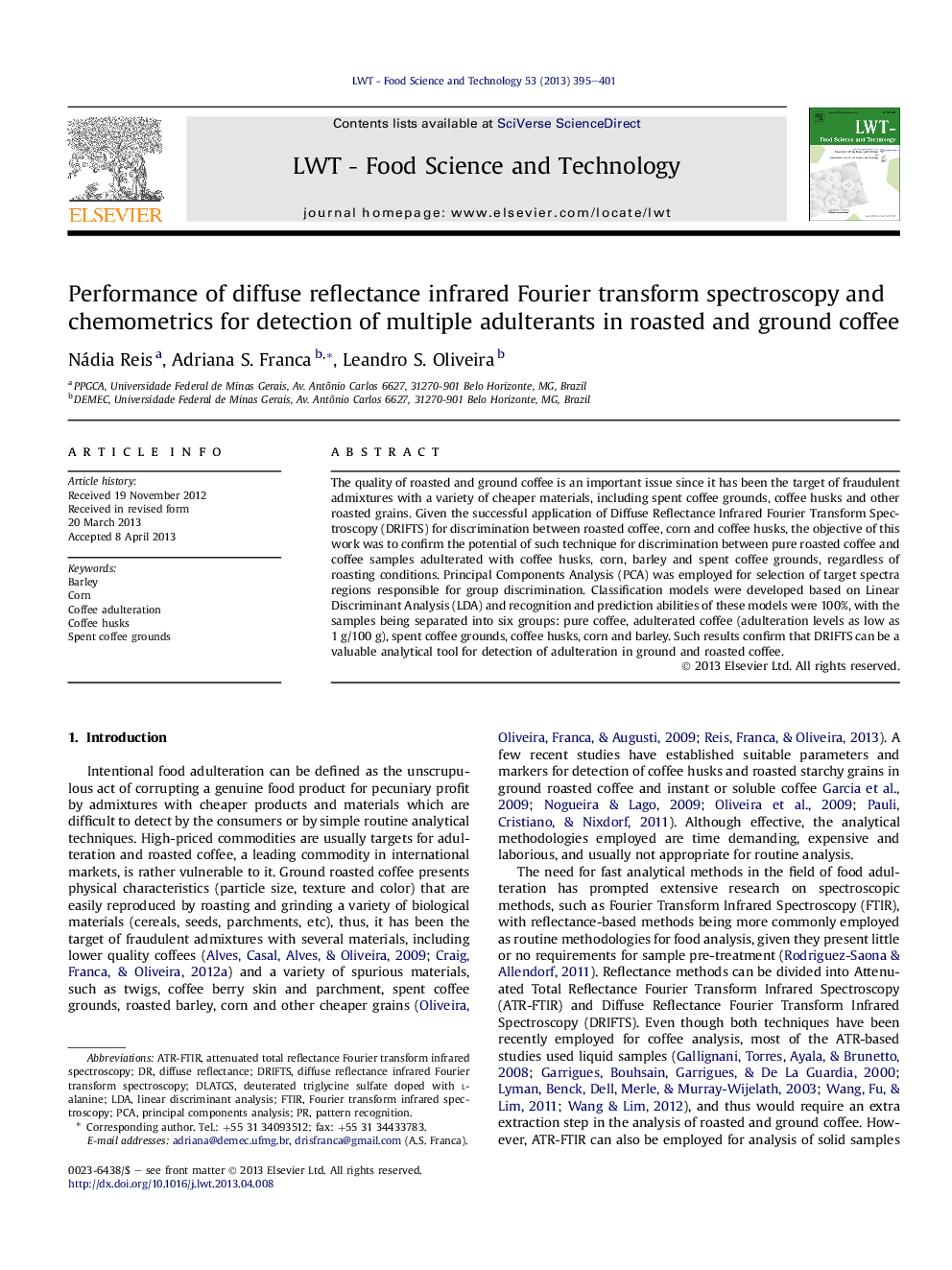| Article ID | Journal | Published Year | Pages | File Type |
|---|---|---|---|---|
| 6404419 | LWT - Food Science and Technology | 2013 | 7 Pages |
Abstract
The quality of roasted and ground coffee is an important issue since it has been the target of fraudulent admixtures with a variety of cheaper materials, including spent coffee grounds, coffee husks and other roasted grains. Given the successful application of Diffuse Reflectance Infrared Fourier Transform Spectroscopy (DRIFTS) for discrimination between roasted coffee, corn and coffee husks, the objective of this work was to confirm the potential of such technique for discrimination between pure roasted coffee and coffee samples adulterated with coffee husks, corn, barley and spent coffee grounds, regardless of roasting conditions. Principal Components Analysis (PCA) was employed for selection of target spectra regions responsible for group discrimination. Classification models were developed based on Linear Discriminant Analysis (LDA) and recognition and prediction abilities of these models were 100%, with the samples being separated into six groups: pure coffee, adulterated coffee (adulteration levels as low as 1Â g/100Â g), spent coffee grounds, coffee husks, corn and barley. Such results confirm that DRIFTS can be a valuable analytical tool for detection of adulteration in ground and roasted coffee.
Keywords
DLATGSATR-FTIRPCADiffuse Reflectance Infrared Fourier Transform SpectroscopyDiffuse reflectancePattern recognitionPrincipal components analysisLinear discriminant analysisLDACoffee adulterationDRIFTSBarleyCornSpent coffee groundsCoffee husksFTIRattenuated total reflectance Fourier transform infrared spectroscopyFourier transform infrared spectroscopy
Related Topics
Life Sciences
Agricultural and Biological Sciences
Food Science
Authors
Nádia Reis, Adriana S. Franca, Leandro S. Oliveira,
